What Is Buddhist Vesak?
Vesak is a Buddhist holiday that celebrates the Lunar Full Moon Day of May, commemorating the birth of our Bodhisatta, the night he attained enlightenment under the Bodhi Tree, and the day Parinibbāna was attained (His Final-Death). This holiday is celebrated by Buddhists all over the world, especially in Theravāda Buddhist countries such as Sri Lanka, Myanmar, Thailand, Laos, and Cambodia. This year, it will be on May 23rd, 2024. You can find the dates here at timeanddate.com
Sometimes we have a leap year in Buddhism, and sometimes the calendars are off by a month because an extra month is added, which pushes the Vesak holiday back by one more month. You can read about how this works in my article Why Is Vassa Late Sometimes?
The name “Vesak” comes from the Lunar Month named in the Pāḷi language named Vesākha. Here is a list below:
- Citta - March-April
- Vesākha - April-May (Vesak, commemorating the Buddha’s birth, enlightenment, and parinibbāna)
- Jeṭṭha - May-June
- Āsāḷha - June-July (Beginning of the vassa period)
- Sāvaṇa - July-August
- Poṭṭhapāda - August-September
- Assayuja - September-October (End of the vassa period)
- Kattika - October-November (Loy Krathong is celebrated in some countries)
- Māgasira - November-December
- Phussa - December-January
- Māgha - January-February (Magha Puja, celebrating a gathering of arahants)
- Phagguṇa - February-March
The Buddha’s Birth
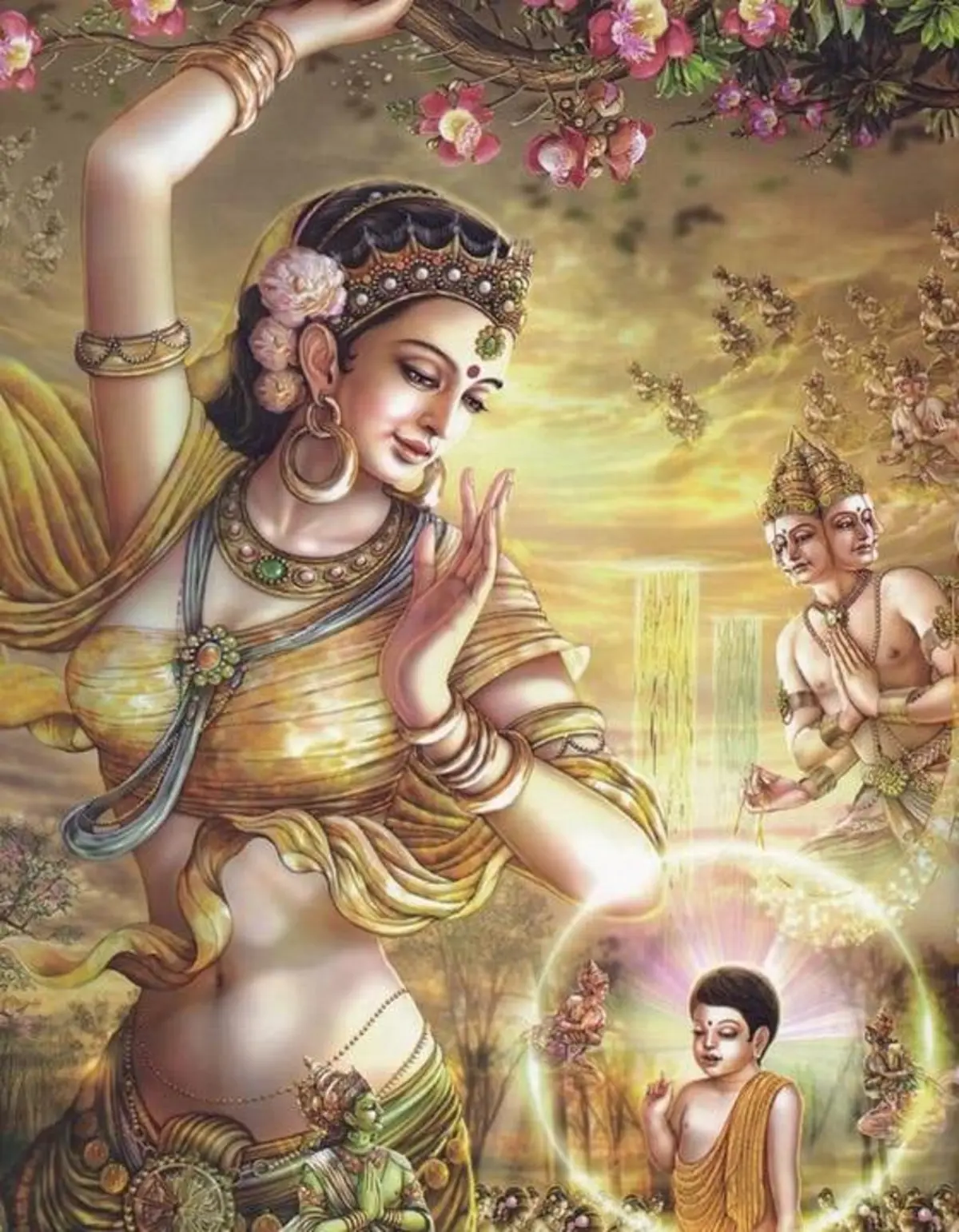 Before the Buddha is enlightened he is actually called a Bodhisatta. In Sanskrit, the word is Bodhisattva. The reason Theravāda monks outside of Sri Lanka prefer Pāḷi especially for this word is because other sects of Buddhism like Mahāyāna or Tibetan Buddhism use Sanskrit and they often have different explanations for what a Bodhisattva is and how long it takes to become a Buddha.
Before the Buddha is enlightened he is actually called a Bodhisatta. In Sanskrit, the word is Bodhisattva. The reason Theravāda monks outside of Sri Lanka prefer Pāḷi especially for this word is because other sects of Buddhism like Mahāyāna or Tibetan Buddhism use Sanskrit and they often have different explanations for what a Bodhisattva is and how long it takes to become a Buddha.
During the Birth of the Bodhisatta. The mother who was called Mahāmāyā gave birth while holding onto a branch in Lumbini. In Sri Lanka they often (used to) hold on to a rope to give birth.
The Bodhisatta was said to have held his right finger up in the air while taking 7 steps with lotus blooms emerging from each step. He then proclaimed, this was his last birth. The earth shook when he was born, and this was the first sign the Bodhisatta was born. Lumbini, Nepal is one of the great pilgrimage sites for Buddhists to visit. If you are looking for a Christmas equivalent, this day is it.
Buddha’s Enlightenment
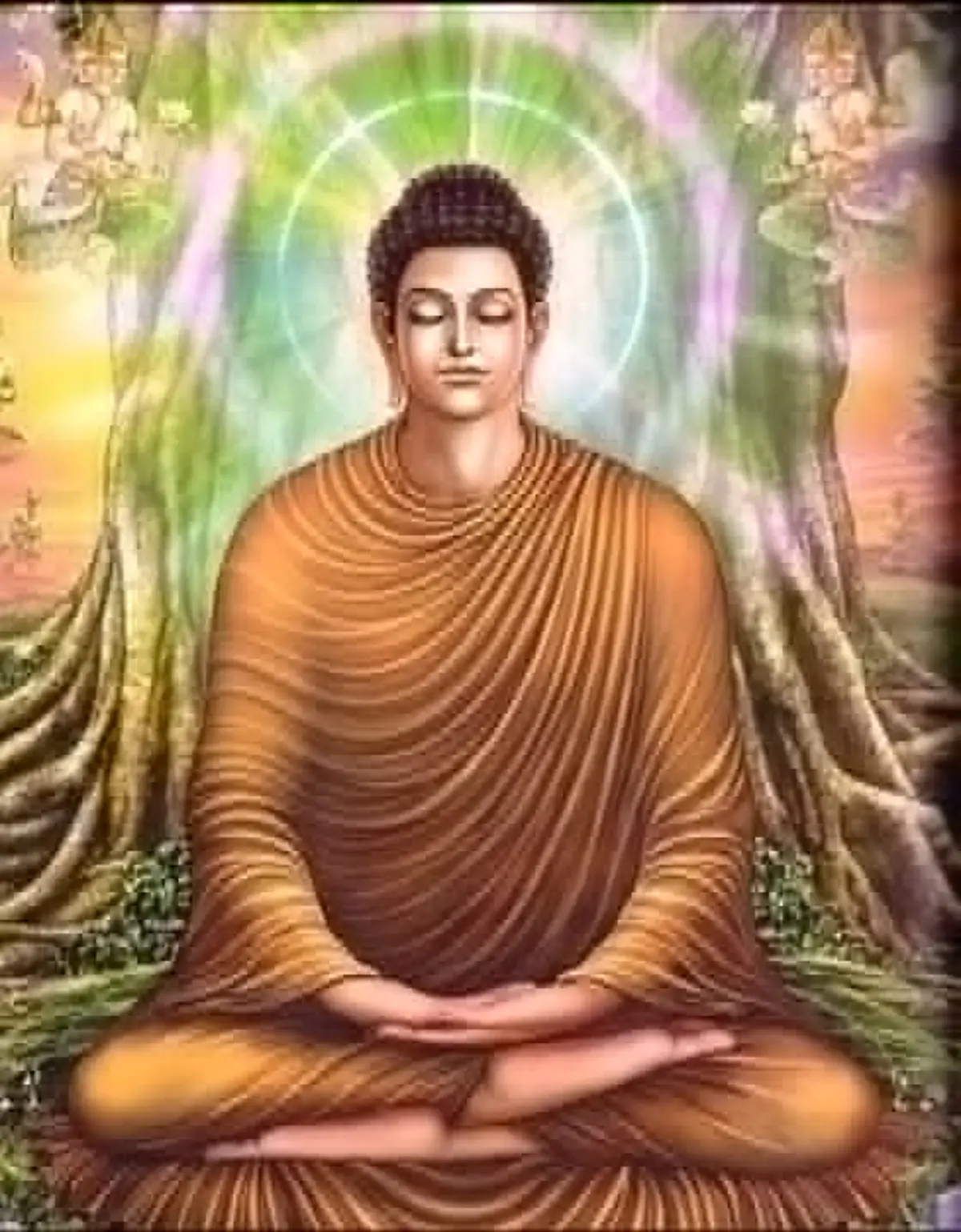
Vesak is also a celebration for the night when the Bodhisatta became a Fully-Self-Enlighted-Buddha, a Sammāsambuddha. He did so under the Bodhi Tree. When he defeated Māra under the Bodhi Tree and became a Sammāsambuddha he was asked “Who will be your witness?” Often the Buddha is shown with his hand touching the ground, proclaiming that the Earth would be his witness. At that moment the Earth shook again.
The Bodhi Tree is often venerated equally as much as a Buddha himself because it represents the quality of the Buddha’s Enlightenment. However, in most parts of the world, a Buddha statue might be easier to find.
The oldest known sapling of the Bodhi Tree is found in Anuradhapura. It was brought by a nun named Venerable Saṅghamittattherī. She is shown in the first picture below.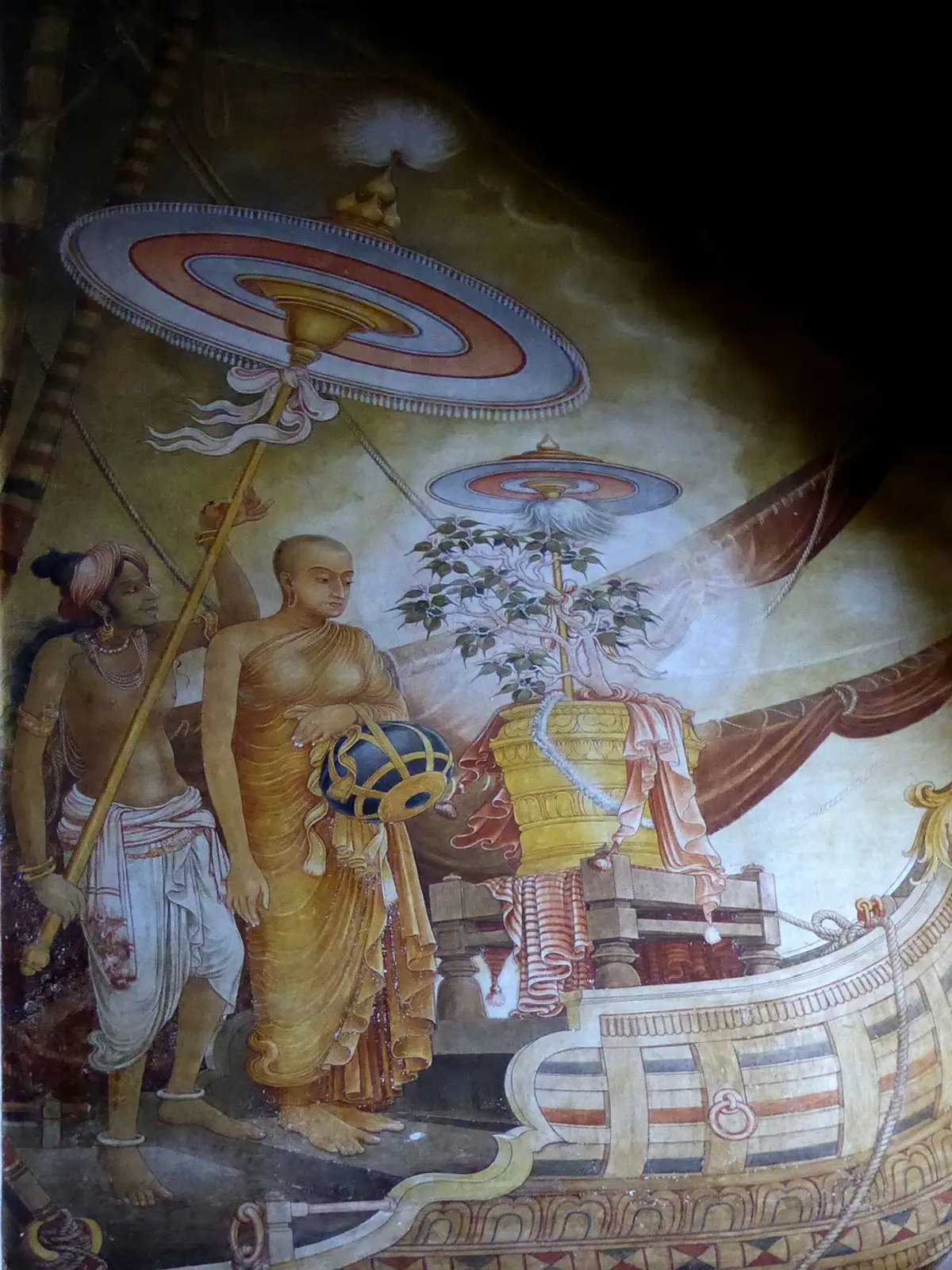
A monk named Venerable Indriyasaṃvara through a special arrangement was able to get original saplings from the original Bodhi Tree in Anuradhapura. Even the Bodhi tree found in Bodh Gaya was brought from Sri Lanka. He will be bringing saplings to Cambodia for this Year’s Vesak.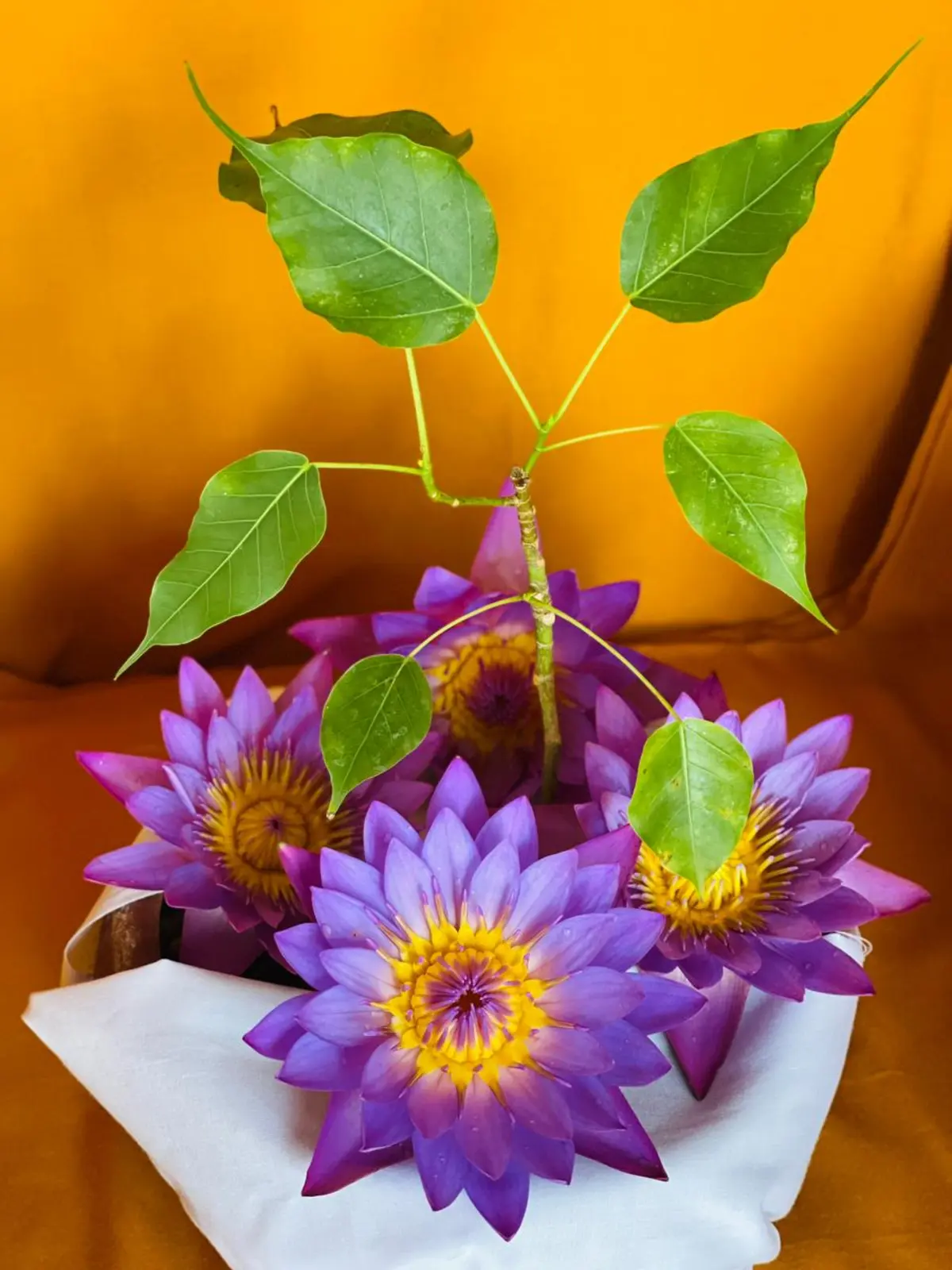
Because there is quite a lot involved to bring a tree on a plane (One must remove the soil), I told him it would be better if he went by boat like Venerable Saṅghamittattherī in the picture above. Below is a picture of the Baby Bodhi Tree held by Venerable Indriyasaṃvara. We wish him a safe journey and may the devas protect him just as they protected Venerable Saṅghamittattherī.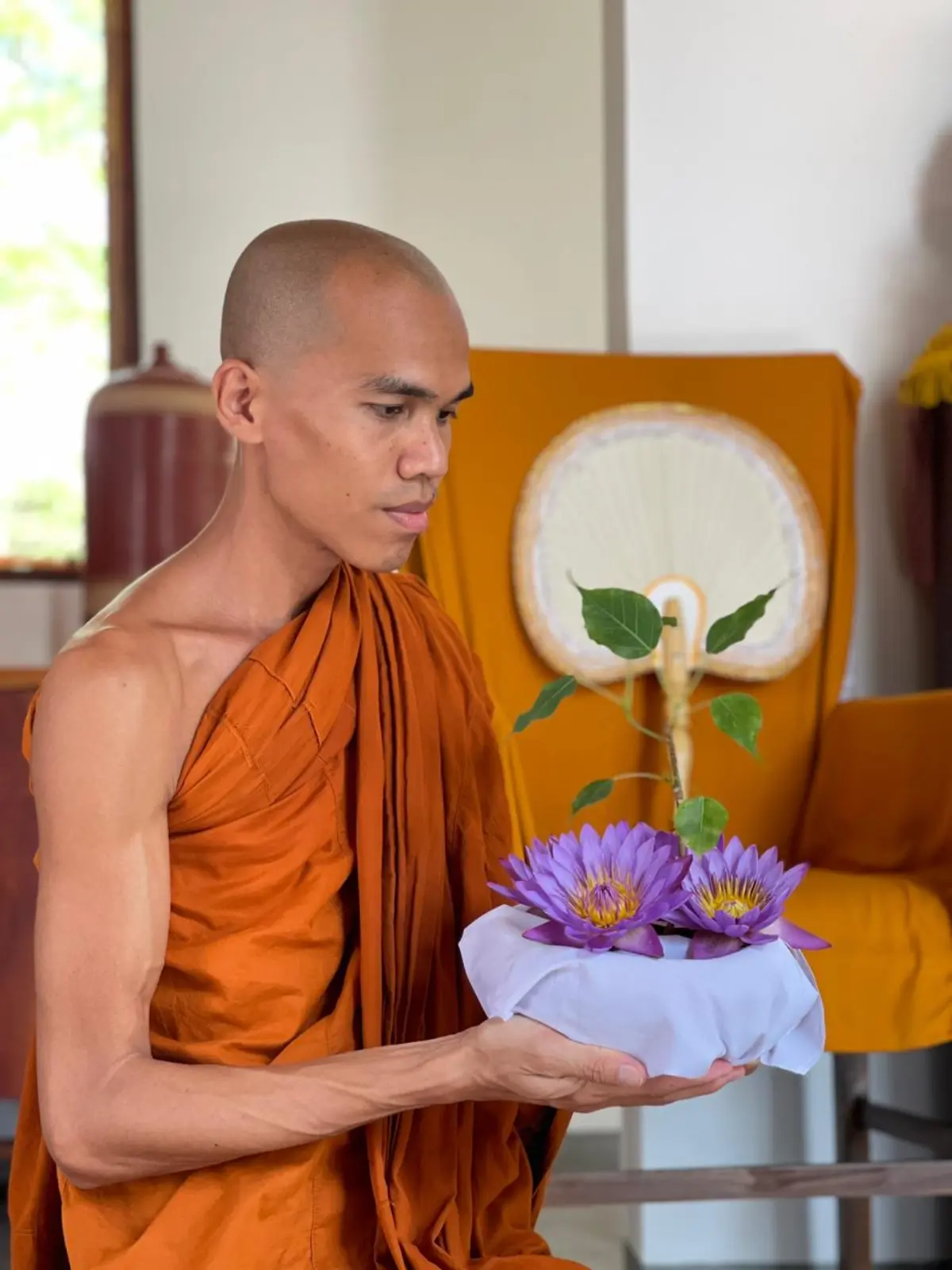
Parinibbāna
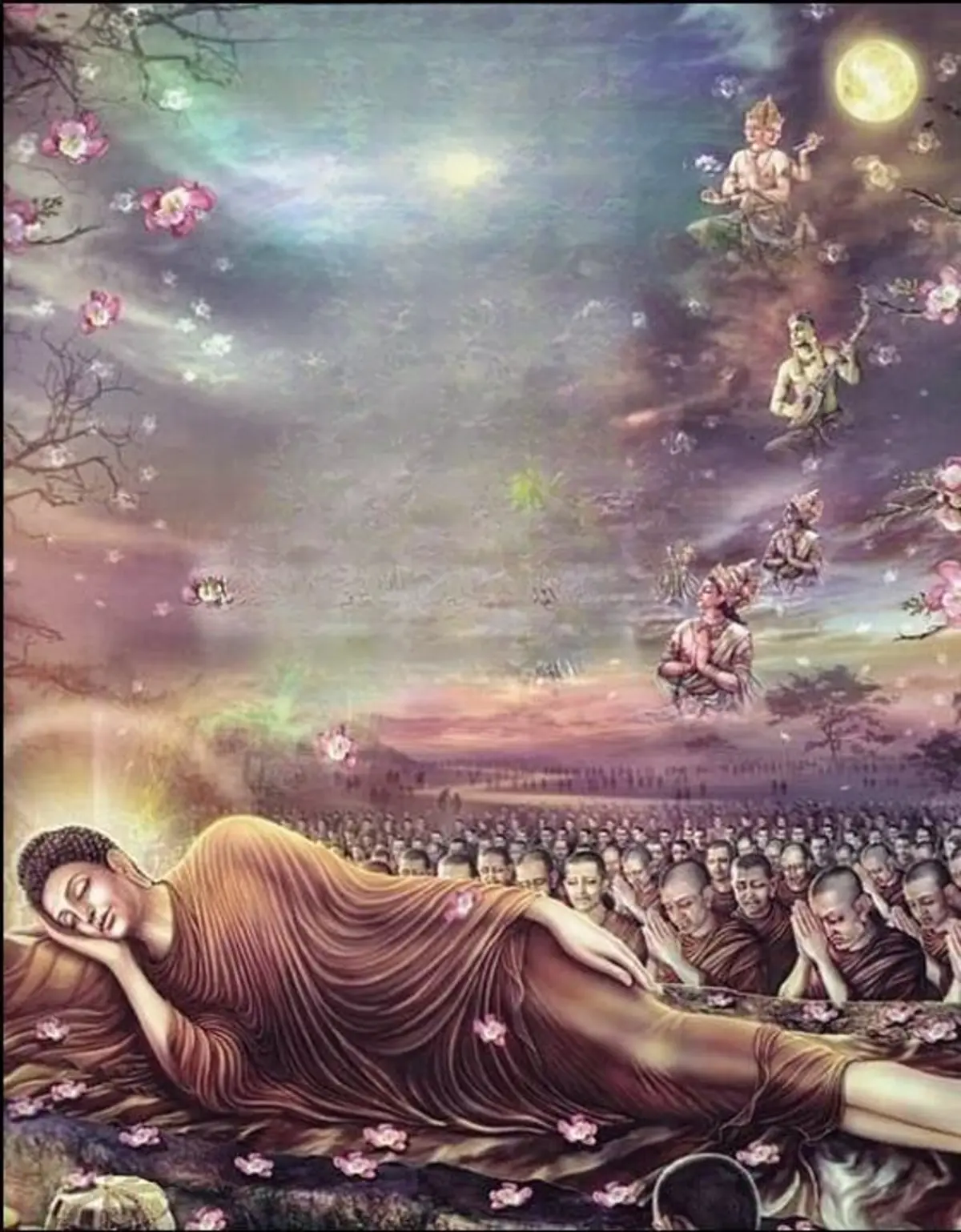 Parinibbāna is the Buddha’s last death. When any Arahant, either a Sammāsambuddha or an Arahant disciple of The Buddha dies, the attainment of Parinibbāna is the same. What happens in Parinibbāna? The 5 khandas which are always continuously arising and passing away at rapid speeds, cease for the final time, and do not arise again (except for the dead body continues without life). The five khandas are bodily form, feeling, perception, formations, and consciousness. These five components make up what we call you or me or the “self”. There is nothing found outside of the five khandas. When these cease and do not arise again, nothing else exists or arises in its place. Anyone who says otherwise is not a Theravādan. You can find an article I wrote called,
Does The Buddha live in Nibbana? The classic picture is the reclining Buddha who is shown between two Sal Trees although this picture has them cropped out.
Parinibbāna is the Buddha’s last death. When any Arahant, either a Sammāsambuddha or an Arahant disciple of The Buddha dies, the attainment of Parinibbāna is the same. What happens in Parinibbāna? The 5 khandas which are always continuously arising and passing away at rapid speeds, cease for the final time, and do not arise again (except for the dead body continues without life). The five khandas are bodily form, feeling, perception, formations, and consciousness. These five components make up what we call you or me or the “self”. There is nothing found outside of the five khandas. When these cease and do not arise again, nothing else exists or arises in its place. Anyone who says otherwise is not a Theravādan. You can find an article I wrote called,
Does The Buddha live in Nibbana? The classic picture is the reclining Buddha who is shown between two Sal Trees although this picture has them cropped out.
Conclusion
The Vesak holiday is on the Full Moon Day of Vesākha month usually found in the month of May. The holiday represents the birth of our Bodhisatta, the enlightenment day of the Buddha, and the final death or Parinibbāna. The Earth shook on these three occasions and the sites where these three events occurred are sacred pilgrimage sites in India and Nepal. There is one more Great pilgrimage site in Sarnath where the first teaching was given. This marks the 4 great pilgrimage sites. May this knowledge inspire you to practice the teachings of the Buddha so that you may reach Parinibbāna as well!
Summary Poem
In the moon of May when flowers rise,
Vesak’s voice whispers through the skies.
Beneath the Bodhi’s welcoming shade,
A prince to peace did vows persuade.
A babe with steps on lotus sprung,
Proclaimed his last, his journey begun.
In Lumbini’s embrace, the earth did sway,
Marking the path, the Bodhisatta’s way.
Years turned leaves, and wisdom grew,
Underneath that tree, the fierce Mara knew.
A touch to Earth, a silent plea,
Witness the moment of Bodhi’s glee.
Parinibbāna’s silent call,
Where final breaths of essence fall.
The five khandas cease, no more to be,
In endless peace, the mind is free.
On Vesak reflect, with hearts aflame,
On birth, awakening, and the end of game.
For with each deed, each word He imparts,
May His path enlighten all the hearts.
Click below to search subjects